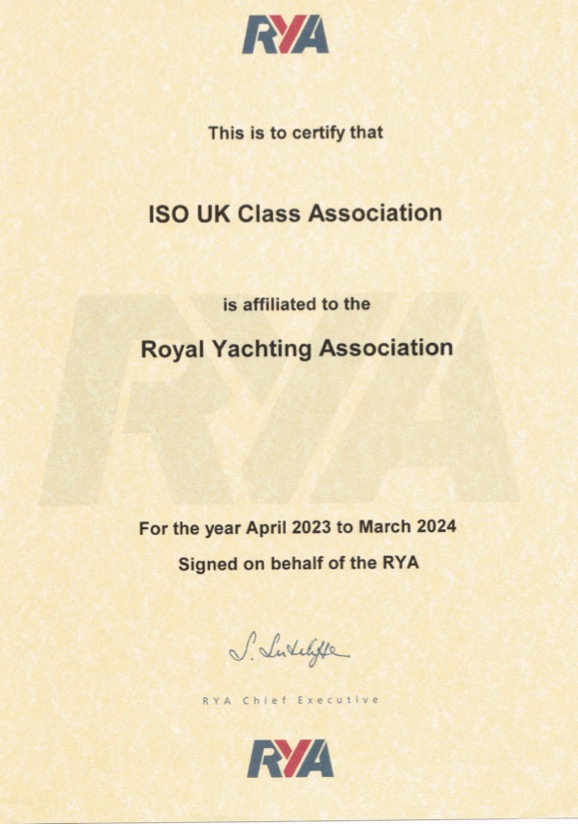Mainsheet Bridle
Getting the mainsheet bridle at the right hieght is very important. Too low, then all you are doing when you pull the main in is really pulling the main down and that is the job of the kicker. Too high, and when the mainsheet is block to block, then the boom isn't over the center line but over the leeward quarter.
Remember also that when the mast rake is altered, the strops will also have to be altered. The lower the pin on the shroud, the lower the strops have to be and visa versa. This is the same when talking about the kicker, no kicker (light winds) then the strops need to be long, whereas lots of kicker (strong winds) the strops need to be shorter. You only need two rake settings at the most anyway, so therefore you only need two strop settings.
Below is a way of quickly adjusting the strops on the water. The situation here is that you go out in the morning with light winds which requires no kicker (long strops) and as the day goes on, the wind picks up and more kicker is required therefore the strops need to be shortened.
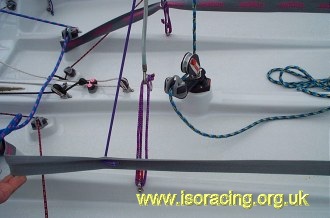 |
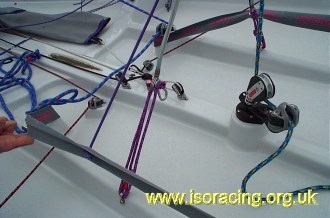 |
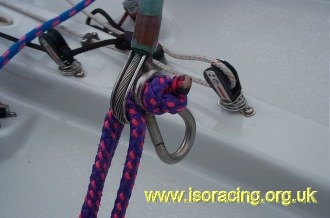 |
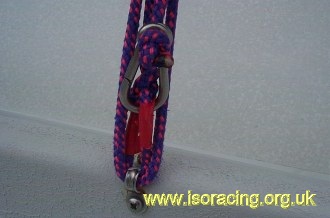 |
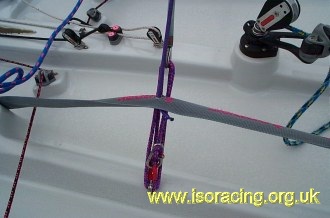 |
|
I used the hook version above aboard 1013 for quite some time, but came across a problem.This was in light winds when as helm, I was sat on the wing well infront of the strops. When I played the mainsheet and squeezed it on tight as a gust hit, I found that the mainsheet itself found its way into the hook. To release it, I would have to get the crew to reach across, and pop the mainsheet out whilst I concentrated on steering and sailing the boat fast. I soon switched to the method below using about 3.2m of 5mm either D12, V12 or Dyneema core style rope. Very easy to splice.
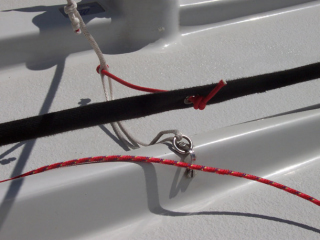 |
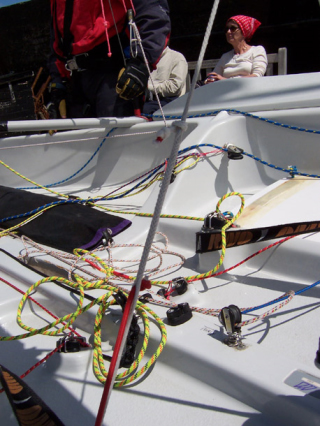 |




